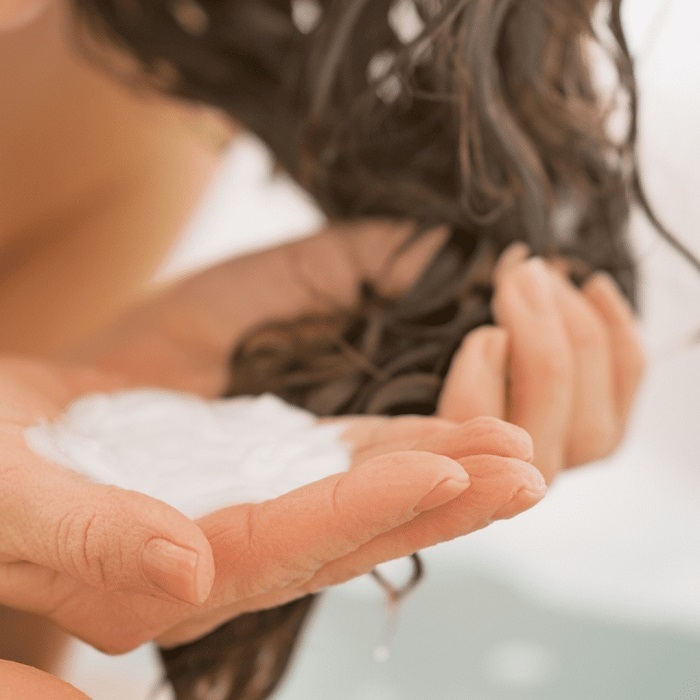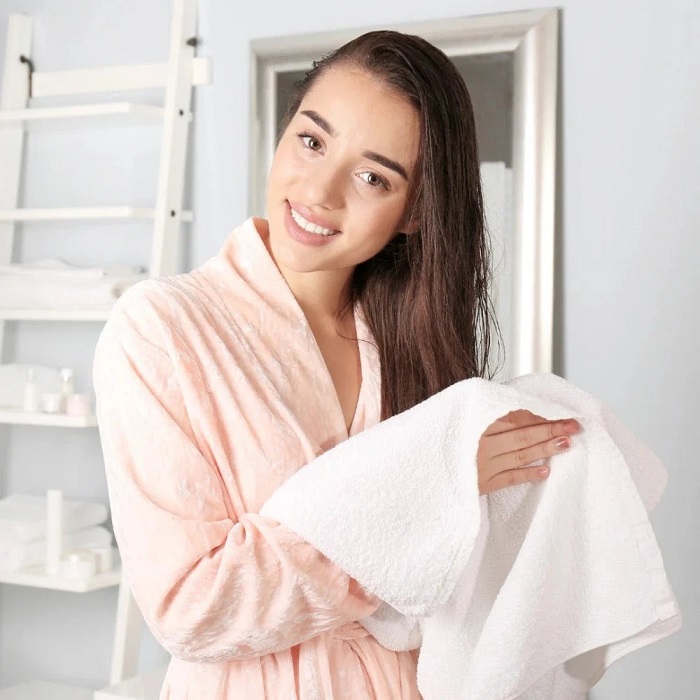The Hair Care Debate: Shampoo or Conditioner First?
When it comes to hair care, the sequence of using shampoo or conditioner first sparks much discussion. Traditional methods suggest shampooing before conditioning. Yet, some beauty enthusiasts endorse the opposite. Here’s what you need to know.
- Traditional Approach: The typical routine involves applying shampoo first. This step aims to clean the scalp and hair by removing dirt, oil, and product buildup. After rinsing out the shampoo, conditioner follows to restore moisture and protect the hair.
- Conditioner-First Advocates: A lesser-known tactic, reverse washing, starts with conditioner. Proponents believe that conditioning before shampooing can provide extra nourishment, especially for fine or oily hair types.
- Expert Views: Hair care specialists offer varied opinions. While most stick to the shampoo-then-condition protocol, others suggest choosing based on your specific hair type and needs.
- Personal Hair Goals: Consider what you want to achieve with your hair care regimen. Desire more volume? Conditioning first might be your answer. Seeking deep cleansing? Shampoo first could be best.
Understanding the correct order specific to your hair needs is essential. With this in mind, let’s explore the science behind each method to help you make an informed decision.
The Science of Hair Cleansing and Conditioning

Understanding how shampoo and conditioner work is key to optimizing your hair care routine. Shampoo serves a primary function: it cleans your hair and scalp. It does this through detergents known as surfactants. Surfactants have molecules that attract both water and oil. When you lather up, these molecules latch onto the oils, dirt, and product residues on your hair. As you rinse, they bind with the water and wash away the grime, leaving your hair clean.
Conditioners, on the other hand, are like a nurturing balm for your strands. They typically contain ingredients such as silicones, oils, and emollients. These substances smooth down the hair cuticle – the outermost layer of the hair shaft. The hair cuticle opens up when it’s exposed to the cleansing agents in shampoos. Conditioners coat the hair fibers, help to seal in moisture, and protect hair from environmental damage. They can also make hair easier to manage by reducing static and tangles.
The reason shampoo usually comes before conditioner in a washing routine is based on their functions. Shampooing first ensures that hair is clean so the conditioner can then work effectively by hydrating and protecting the hair. This sequence makes the most of the properties of both products. However, the reverse washing method, which we will explore later, challenges this traditional order.
Using shampoo and conditioner correctly plays an important role in maintaining the balance of cleaning and conditioning. Too much cleansing can strip hair of its natural oils, leading to dryness. Conversely, over-conditioning may weigh down hair and make it look greasy. It’s about finding the right balance unique to your hair type, which we’ll discuss in upcoming sections.
Pros and Cons: Shampooing Before Conditioning
Adopting the traditional method of shampooing before conditioning comes with its own set of advantages and drawbacks. Here’s a brief look at the pros and cons to help you evaluate this approach.
Pros:
- Effective Cleansing: Shampooing first thoroughly cleanses the scalp and hair, removing oil and buildup.
- Prepares Hair for Conditioning: Clean hair allows better absorption of conditioner’s nourishing ingredients.
- Increases Efficacy: Conditioner works best on a clean base, sealing in moisture more efficiently.
- Maintains Volume: For some, conditioning after shampooing can help maintain hair volume, avoiding the ‘weighed down’ look.
Cons:
- Could Strip Natural Oils: Excessive shampooing may strip hair of its natural oils, leading to dryness.
- Requires Thorough Rinsing: Shampoo residue can diminish the conditioner’s benefits if not rinsed out properly.
- May Affect Hair Texture: If not followed by an effective conditioner, shampooing first can leave hair feeling rough.
- Not Suitable for All: People with particularly dry or damaged hair might find it more beneficial to condition first.
Deciding if shampooing before conditioning suits you can depend on numerous factors like your hair type, personal hair goals, and individual preferences. This traditional routine has stood the test of time, but it’s important to consider both sides of the coin before making it a part of your personal hair care regimen.
The Reverse Washing Method: Conditioning Before Shampooing

The reverse washing method is where conditioning takes the lead. In this unconventional approach, you start by applying conditioner to your hair before shampooing. Here are the points to consider about this technique:
- Nourishment First: Conditioning first can provide intensive moisture to the hair strands. This is especially helpful for those with fine or oily hair.
- Volume Boost: Fine hair may benefit from extra volume when conditioned before shampooing. The conditioner doesn’t weigh the hair down as it’s washed out after.
- Protection from Harsh Shampoos: Applying conditioner first can form a protective layer. This might shield your hair from the potentially stripping effects of shampoo.
- Better Oil Management: For oily hair types, this method can help manage excess oil. Conditioning first helps moisturize the scalp, potentially regulating oil production.
- Possible Challenges: Getting used to this method might take time. Also, thorough rinsing is crucial to avoid leaving residue that can make hair look dull.
Reverse washing challenges the traditional ‘shampoo then condition’ routine. It suggests that conditioning first could cater to specific hair needs. However, it’s imperative to assess this method’s effectiveness on your own hair. Consistency and correct application will determine if reverse washing works for you.
How Hair Type Influences Your Washing Routine
The debate on whether to use shampoo or conditioner first often boils down to hair type. Different hair textures and conditions require specific care to ensure the best results. Here’s how various hair types can influence your washing routine:
- Fine or Oily Hair: For those with fine or oily hair, starting with conditioner may prevent a flat and greasy appearance. The conditioner can offer hydration without weighing the hair down, while a following shampoo cleanses oil effectively.
- Thick or Curly Hair: Individuals with thick, curly hair can benefit from shampooing first. It helps in cleaning and opening up the hair cuticles before a deep conditioning treatment that defines curls and reduces frizz.
- Dry or Damaged Hair: If you have dry or damaged hair, moisturizing is key. Shampooing first may lead to further dryness. Conditioning before shampooing might protect and nourish fragile strands, although personal testing is essential.
- Normal Hair: Those with normal hair types have more flexibility. Typically, shampooing before conditioning balances cleansing and hydrating needs, but experimenting can help find the perfect routine.
- Color-Treated Hair: For color-treated hair, preserving the dye is crucial. Conditioning first can act as a barrier against fading during shampooing. Yet, a color-safe shampoo should ideally be used, followed by a conditioner that seals in color.
Your hair’s response is the best guide to choose between shampoo or conditioner first. It is important to observe the effects of both methods and adjust accordingly, all while keeping in mind that the health of your scalp is as important as the hair strands. Regular adjustments to your hair care regimen will help you achieve the optimal balance between cleansing and conditioning for your hair type.
Expert Tips for Shampooing and Conditioning
Achieving the perfect hair care routine requires knowing when to use shampoo or conditioner first. Here are some expert tips to help refine your process.
- Understand Your Hair: Know your hair type and its needs. This is crucial for deciding the proper order of shampoo and conditioner.
- Start with a Pre-Rinse: Always begin with lukewarm water to open hair cuticles. It prepares your hair for effective cleansing.
- Use the Right Amount: Don’t overuse products. A dime-sized amount of shampoo for short hair and a quarter-sized for long is usually enough.
- Apply Shampoo Correctly: Focus on your scalp when shampooing. It’s where oil and buildup occur the most.
- Gentle Massage: Massage your scalp gently with fingertips. It boosts circulation and ensures even distribution of shampoo.
- Rinse Thoroughly: Remove all shampoo before conditioning. Leftover shampoo can prevent conditioner from penetrating properly.
- Conditioner Application: Apply conditioner mainly to the ends of your hair. These are the oldest and often the driest parts.
- Leave it On: Allow the conditioner to sit for a few minutes. It gives time for your hair to absorb the moisture.
- Cold Water Rinse: Finish with a cold water rinse to close the cuticles and lock in moisture.
- Comb Gently After: Use a wide-toothed comb on conditioned, wet hair to detangle. Start at the ends and work your way up.
By following these expert tips for shampooing and conditioning, adjusted according to whether you use shampoo or conditioner first, you can keep your hair radiant and healthy.
The Impact of Water Temperature on Hair Washing

The temperature of the water you use to wash your hair matters a lot. It affects how well your shampoo or conditioner will perform. Here’s a quick guide on how to use water temperatures to your advantage:
- Warm Water for Shampooing: Warm water opens up the hair cuticles. This makes it easier for the shampoo to cleanse oil and buildup. Start with lukewarm water to ensure your hair is prepped for cleaning.
- Cool Water for Conditioning: After applying conditioner, rinse it out with cool water. Cool water helps to close the hair cuticles. This locks in the moisture and leaves your hair smooth and shiny.
- Avoid Hot Water: Hot water can strip your hair of essential oils. This can lead to dryness and damage. So, it’s best to avoid using hot water while washing your hair.
- Finish with Cold Water: A final rinse with cold water can boost your hair’s health and shine. It seals the cuticles and makes your hair look radiant.
Whether you choose shampoo or conditioner first, consider the water temperature for the best results. By paying attention to this detail, you can enhance your hair washing routine and protect your hair.
Best Practices for a Healthy Hair Care Routine
Developing a healthy hair care routine is more than choosing between shampoo or conditioner first. Consistency and the right practices can transform your hair’s health and appearance. Here are some best practices to include in your routine:
- Regular Trimming: Get regular trims to avoid split ends. It keeps your hair looking neat and healthy.
- Balanced Diet: Eat a balanced diet rich in vitamins and minerals. What you eat impacts your hair’s health.
- Scalp Care: Don’t ignore your scalp. Use gentle circular motions to massage and promote blood flow.
- Avoid Heat Styling: Minimize the use of heat styling tools. They can damage your hair over time.
- Use a Leave-in Conditioner: A leave-in conditioner can add extra hydration and protect your hair all day.
- Be Gentle: Handle wet hair with care. It’s more fragile and prone to breakage.
- Protect Your Hair: Use hats or hair products with UV protection to shield your hair from sun damage.
- Stay Hydrated: Drink plenty of water. Hydration is key for maintaining healthy hair.
- Choose the Right Products: Pick hair care products suited for your hair type and concerns.
- Avoid Tight Hairstyles: Tight ponytails and braids can pull on the scalp and cause hair loss.
Incorporate these practices regularly and observe your hair’s response. Adjust as needed, and soon you will find the routine that works best for bringing out the very best in your hair.
